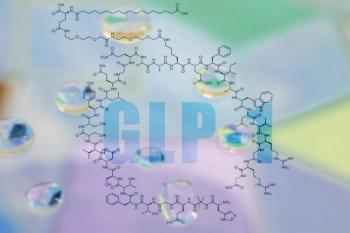
Increasing Levels of CD8+ TILs Prolong Survival in High-Grade Serous Ovarian Cancer
There is a relationship between CD8+ tumor infiltrating lymphocytes (TILs) and high-grade serous ovarian carcinoma (HGSOC) survival, according to a new study published in JAMA Oncology.
There is a relationship between CD8+ tumor infiltrating lymphocytes (TILs) and high-grade serous ovarian carcinoma (HGSOC) survival, according to a new
Epithelial ovarian cancer (OC) contributes to about 14,000 deaths each year in the United States. Although many patients go into remission, most end up relapsing and dying from the disease.
“Immune checkpoint inhibitors have demonstrated clinical activity in a small subset of patients with OC,” wrote the authors. “Understanding the endogenous immune response to OC—including the frequency of CD8+ TILs and their impact on prognosis—has biological and clinical relevance.”
The study followed 5577 women with a primary diagnosis of epithelial ovarian, peritoneal, or fallopian tube cancer, from their enrollment in the study until their deaths. Among them, 5078 women had tumors of the 5 major invasive histotypes: HGSOC, the most common and most lethal; endometrioid OC (ENOC); clear cell OC (CCOC); mucinous OC (MOC); and low-grade serous OC (LGSOC). Tumor specimens were acquired through initial debulking surgery, formalin fixed, paraffin embedded, and arranged on tissue microarrays.
Using a 4-tiered scoring system, the authors organized CD8+ TIL counts as: negative (none), low (1 to 2 TILs), moderate (3 to 19 TILs), and high (20 TILs or more). Most patients with HGSOC cases (83%) had evidence of CD8+ TILs, with lower proportions seen in LGSOC (73%), ENOC (72%), CCOC (52%), and MOC (51%) cases.
Increasing levels of CD8+ TILs were associated with longer survival time in patients with HGSOC. Median survival was 2.8 years for patients with negative CD8+ TILs, 3.0 years for low levels of CD8+ TILs, 3.8 years for moderate levels, and 5.1 for high levels. HGSOC patients with high levels of CD8+ TILs had a 43% reduced risk of death compared with patients with no evidence of CD8+ TILs. Increasing levels of CD8+ TILs were associated with favorable survival in patients without mutations or with a BRCA1 mutation. There was no association between survival and patients with a BRCA2 mutation.
Higher levels of CD8+ were also linked to longer survival time for patients with ENOC and MOC.
These results confirmed that as CD8+ TILs increase from 0 to 20, there is a log-linear survival effect in patients. They also suggest that the quantity of CD8+ TILs, not just their presence, is informative, and the most immune-rich HSGOCs are the most likely to have an enhanced clinical outcome.
This study is the first CD8+ TIL study in histotypes other than HGSOC. Results showed a significant reduction in risk of death for patients with ENOC and MOC. However, no survival associations were seen in CCOC.
“A clinically applicable scoring system for CD8+ TILs should be developed to incorporate into clinical trials,” concluded the authors.
Newsletter
Stay ahead of policy, cost, and value—subscribe to AJMC for expert insights at the intersection of clinical care and health economics.






























































